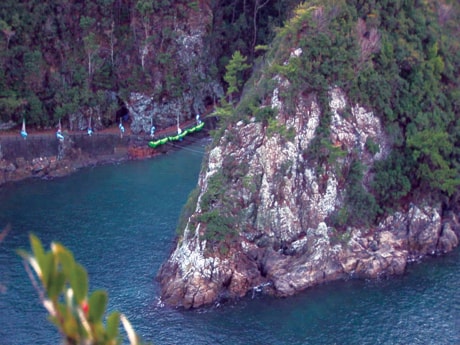TORONTO — In the 1960s, Ric O’Barry trained the five dolphins that appeared on the Flipper TV show. He lived in the house that was featured on the program, and when it aired on Friday nights, he would use an extension cord to haul a television down to the dock so the dolphins could watch themselves in prime time.
The success of Flipper turned live dolphin shows into big business. O’Barry, however, ultimately turned his back on the industry and has since devoted his life to freeing dolphins from captivity.
His journey is at the centre of The Cove, a riveting new expose about the brutal dolphin hunt that takes place each fall in the coastal Japanese town of Taiji.
“The captive dolphin industry is a multibillion-dollar industry,” O’Barry said.
“For so many years, probably 40 years, they’ve been able to pump out this propaganda that dolphins actually belong in captivity, performing inside of buildings in concrete tanks.”
The Cove tells a very different story.
Dolphins, the film explains, have an acute sonar system and find the sound of clapping and cheering at their performances so stressful that they have to be fed Maalox beforehand.
And the dolphin’s beatific smile, said O’Barry, is one of nature’s great deceptions.
O’Barry changed his tune about his profession when Kathy — one of the Flipper dolphins — became so distraught that she “committed suicide” in his arms.
“Dolphins are not automatic air breathers like we are,” O’Barry explained.
“Every breath is a conscious effort . . . . If life becomes too unbearable, they can just simply hold their breath and not take that next breath. That is, indeed, self-induced asphyxiation, which is suicide.”
While commercial whaling has been outlawed since the 1980s, dolphins are still hunted. Director Louie Psihoyos’s quest to shine a light on the practices in Taiji play out with like a heist film in The Cove.
To infiltrate the heavily guarded inlet, Psihoyos assembled a crack team of technical gurus and other experts — including a pair of Canadian divers and a former technician with the Canadian Air Force.
Psihoyos’s operatives execute their mission under cover of darkness, disguising high-definition cameras and microphones as rocks, dressing in camouflage, evading police and wearing masks.
Authorities are shown again and again trying to prevent outsiders from witnessing the hunt.
“There’s no such thing as impossible; impossible’s just a little more difficult,” Psihoyos said of the challenging circumstances surrounding filming.
“Once we decided to go for it, it was just a matter of how we were going to pull it off.”
The Cove lays out condemnations of the dolphin industry as the film hurtles toward its horrifying conclusion: the slaughter itself. The footage captured by Psihoyos’s team is unforgettably gruesome as hunters bang metal poles beneath the water to disorient the dolphins and then go in for the kill, using shockingly primitive methods.
